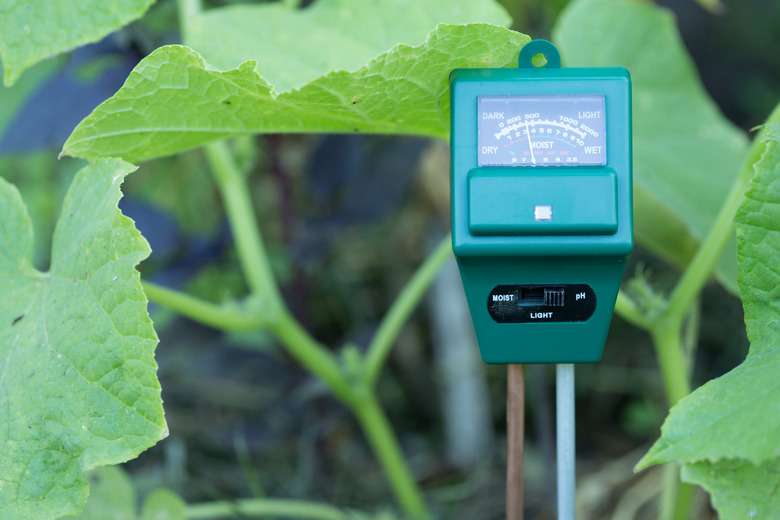How To Make Soil More Alkaline
We may receive a commission on purchases made from links.
Much the way some plants do better in the shade than in full sun, some plants thrive in alkaline soil and may not do well at all if the soil is too acidic. While you could look around the yard and test the soil until you find the perfect alkalinity for your prized new plant, it's just as easy to change the soil's pH level yourself. Mix garden lime or baking soda into the soil to make it more alkaline.
Alkalinity and pH Levels
Alkalinity and pH Levels
Alkaline means the soil has a relatively high pH level compared to acidic soil at the opposite end of the scale. Soil's alkalinity is a measurement of its pH level. The pH scale ranges from 0 to 14, with 0 being the most acidic, 7 being neutral, and 14 being the most alkaline. Soil with a pH reading above 7 is alkaline; anything below 7 is acidic.
Alkalinity and acidity also occur in foods and beverages among other things. For instance, tomatoes, lemon juice, and vinegar are all acidic, with lemon juice being the most acidic of the three with an average 2.5 pH. Baking soda is alkaline, as is the type of lime applied to soil to make it more alkaline. Lime is also known as calcium oxide or quicklime, and it comes from heating limestone and processing it.
To figure out the soil's pH level, take readings in several areas using a soil test kit or by using a soil pH meter, which is usually more accurate. Soil pH often varies in different areas of the garden or yard, which is why testing several areas helps if you intend to make all the soil more alkaline. If you only want to change the pH in one small area, you won't need to test the entire garden or yard.
Increasing Soil Alkalinity
Increasing Soil Alkalinity
To increase the alkalinity of a relatively large area, such as an entire garden plot, lime is a great option. Any form of crushed, granulated, or powered limestone does the trick, and the more fine the lime particles, the faster it changes the soil pH. For sandy soil, use 2 pounds of lime per 100 square feet of garden space. For hard, claylike soil, use 5 pounds per 100 square feet. Rake or till the lime into the top 6 inches of soil until it's thoroughly blended and then water the soil so at least the top 6 inches are wet to help the lime alkalize the soil.
For small areas, such as around the base of a sapling, baking soda also raises the pH, although it won't last as long as lime, which means you may need to reapply it more often. Mix 1 tablespoon of baking soda into a gallon of water and then work the solution into the top 6 inches of soil by tilling or raking the soil. Water the soil again, this time using just tap water. Test the soil again every few months to ensure it's still alkaline and reapply the baking soda solution if necessary.
While it may be tempting to use more of the alkaline-boosting material in the garden than necessary, don't, as it could harm the plants. When soil is either too alkaline or too acidic for any specific plant's needs, it affects the plant's ability to absorb nutrients, negatively affecting growth.
